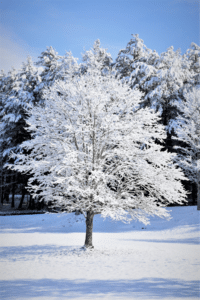
Going, going, gone…
It’s natural to be concerned about your tree’s health and vitality. Your back garden forest may be rotten or diseased without your knowledge. Rotten trees are most likely to occur to sick trees during cold, wet weather. In this blog, we will discuss the signs to look out for to prevent your tree from becoming a victim to rot.
Inspect your tree
Giving your tree a quick look-over and usually help clue you in on it’s state of health. If there’s less leaves, open wounds, or fungus, there are all indicators that the tree is struggling. Also, cracked branches are a likely sign that disease will have crept in and definitely something to look out for!
If your tree is struggling with disease, has been damaged in any way or has dead branches, it is best to call a professional in.

Trunk and Twig testing
A wealth of broken twigs and branches decorating the tree is a good indicator that the tree is rotten or dying. Snapping off a twig to check it’s strength or checking for signs of disease is your best course.
Also, if you tree begins shedding it’s bark, it’s a bad sign. A few trees do naturally let their bark peel off but this is not common so a shedding tree is likely and suffering tree. A quick inspection of the trunk is also a good idea as it might highlight rotten fungus or mushrooms inhabiting it.
Spores, discolouration and defoliation are also indicators to check for when inspecting for tree for signs that it is rotten.
From roots, to shoots
It’s always important to check the roots of your tree as they are the tree’s connection to the earth and the life-giving nutrients that come with it. Ensure there are no protruding roots and that the tree is upright – not blown over by winds. Any damage to the root plate, either by man or nature will weaken the tree and endanger it to disease or it may become rotten.
Another thing to remember is the fact that your tree may simply be getting old. Trees have a wonderful life-span but they don’t last forever so if your tree is looking unhealthy, rotten, or unstable, it may have just lived it’s lifetime. In this case, the best solution is the call an expert is to get it safely removed.
Why is it important to notice these things?
Dying and rotten trees can be very harmful if left unchecked. Brittle branches can be easily snapped off, falling on property or pets. Or, the whole tree may succumb to the attack and fall on your home or in your garden. The unstable nature of a dying tree makes it a great hazard for people and property since it’s potential for damage is great. Noticing a struggling tree can solve problems in the future and a quick removal is often the best option.
Simply, follow the steps that have been outlined in this blog to see if your tree is in need of care and to ensure that you are able to take action.
What to do if you see your tree becoming rotten…
If you notice that your tree is showing symptons of being rotten, it’s best to bring in a professional opinion to prevent the tree from becoming potentially harmful. It may be that the tree will need to be removed for safety to people and property. For more on dead or rotten tree removal, read our page:
4. Deadwood Removal (rootsandshootsmanchester.com)
Or visit the Arb Association:
Arboricultural Association – Dead standing trees – to keep or not to keep?









